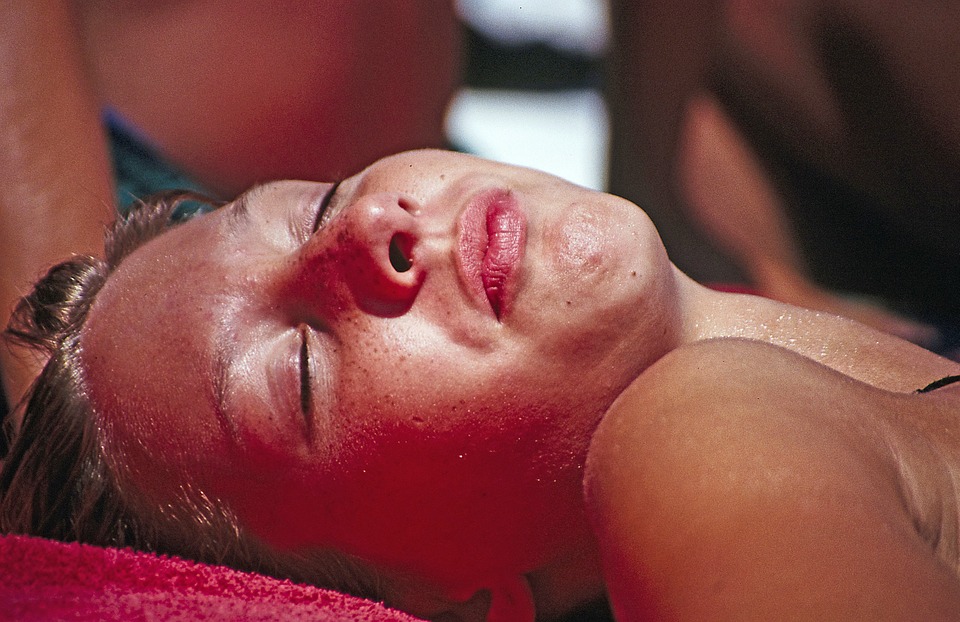What Do Ultra-Violet Rays Do To Our Skin?
What is “Sun damaged” skin?
Summer is here, and so is the sun! We spend a lot of time outside during the summer-time and we often forget how the sun can damage our skin. But how does sunlight damage our skin?
Although light is necessary for life, some of this light carries so
much energy that it actually has the capacity to damage your skin. “Sun damage” describes the changes that occur in your skin in response to effect of the damaging sun rays. This damaging light is in the ultra-violet (UV) spectrum and is divided into 3 categories: UVA, UVB, and UVC.
What are the Different Types of UV Rays?

UVC – rays have the shortest wavelength (100 – 280 nm) in UV spectrum, and carry the highest energy. They kill germs, and are used commercially for their germicidal effects. They are usually filtered-out by Earth’s atmosphere, and do not reach us on the ground.
UVB – Next in the UV spectrum are UVB rays. They are of medium wavelength ( 280 – 315 nm), and reach the ground level.
UVA – rays have the longest wavelength (315 – 400 nm) in UV range UVA, UVB, and UVC rays can all damage collagen fibers, thus accelerating aging of the skin. Both UVA and UVB destroy Retinol (a form of vitamin A) in skin. Thus, Retinol protects skin from harmful effects of UV light.
Important to Know
UVC and UVB rays carry more energy and can damage DNA directly, while UVA rays penetrate more deeply into the skin and cause DNA damage indirectly by generating free radicals and reactive oxygen species. This reaction is what damages DNA. Also, UVA is immunosuppressive for the entire body (accounting for a large part of the immunosuppressive effects of sunlight over-exposure).
Because UVA does not cause reddening of the skin (erythema), it is not measured in the usual types of SPF testing. There is no good clinical measurement for blockage of UVA radiation, but it is important for sunscreen to block both UVA and UVB.
How Exactly do UV Rays harm our Skin?
“Sun damage” describes the changes that occur in your skin in response to effect of the damaging sun rays. These changes include:
- Changes in texture: skin loses it’s elasticity as collagen and elastin fibers are destroyed by UV radiation. It becomes thinner, leathery, and more fragile.
- Changes in color: skin tries to protect itself by producing additional pigment that would absorb some of the damaging rays and neutralize them. This pigment production is not always uniform, and often occurs in the form of sun spots, or brown spots and blotches of pigment.
- New blood vessels form as a reaction to solar injury, resulting in spider veins and telangiectasiae.
Prevent Sun Damage!
It is almost impossible to completely prevent sun damage, but there are preventative measures that you can take.
Some simple measures you could take to prevent sun damage include:
- Avoid sun-exposed areas and look for shade. Particularly avoid mid-day sun (10 AM-4 PM)
- Wear hats, sun glasses, and loose clothing
- Use a sunscreen with highest protective SPF rating and choose one that has a sun block in it rather than just a chemical sun screen. Sun block will usually contain molecules such as Zinc Oxide or Titanium Dioxide, which are metal-containing molecules that physically block and reflect sunlight rather than just absorbing part of the spectrum
- Do not use indoor tanning
Available Treatments at Medical Spa Club
Treatment of sun damage starts with a thorough assessment at our Richmond Clinic to determine the options most suited to your individual case. These options could include medications as well as a wide range of cosmetic treatments.
These are only a few treatments we offer. Want to see how you can prevent or fix sun damage? Book a consultation today. Call us at 604-284-5501 if you have any questions. Our friendly trained staff will help you every step of the way!





